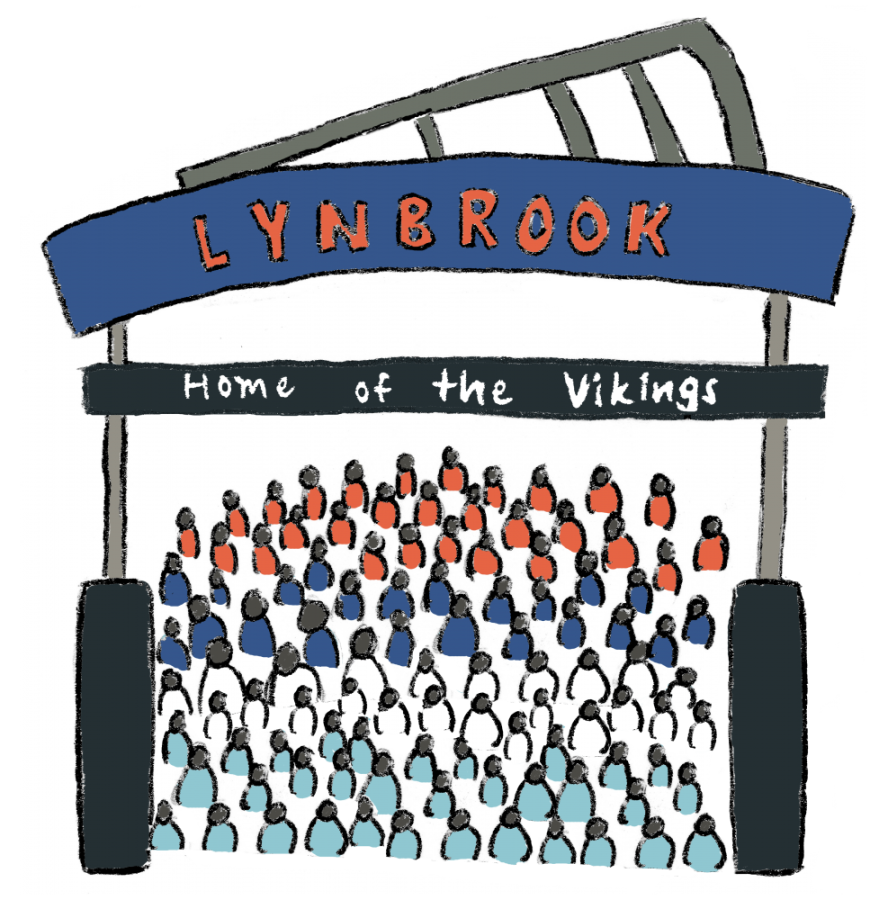Editorial: Increased student population initiates on-campus change
Staff Editorial: Voice of the Epic
September 28, 2017
With students from both Miller and Hyde Middle Schools, as well as from various other middle schools in the area, this year’s freshman class of 2021, totaling 532, is one of the largest that Lynbrook has welcomed in the past few years. The overall increase in students, though it may affect the use of faculties and resources, is necessary in order to accommodate a larger variety of classes and sections.
In order to counter the decreasing enrollment of students living within Lynbrook enrollment boundaries, the Citizens Advisory Committee (CAC) decided, in Nov. 2016, to provide students from Hyde Middle School, as well as other local middle schools, the option to enroll at Lynbrook this year. This year’s increase of 91 students served as a temporary solution to Lynbrook’s declining student population and was part of an effort to maintain a variety of course offerings and extracurricular activities. Classes and sections are allowed at Lynbrook each year depending on a constant ratio of 32.5 students per class. A decrease in students means that certain classes may be cut and fewer sections for other subjects are available. As a result of the boost in students this year, Lynbrook employed 15 new teachers and was able to offer five new classes, such as this year’s AP Computer Science Principles, Photography and Ceramics.
“One of things that was happening with the declining enrollment is that we weren’t able to offer as many classes and choices — some teachers would possibly have to go to other schools to work full time,” said assistant principal Eric Wong. “To sustain our programs, we needed to get some more kids. That’s what the CAC was involved in.”
While Lynbrook has long term plans for construction in order to optimize facility access and capacity, the steady increase in enrollment will unavoidably cause several changes for students in terms of school resource availability, access and efficiency. For example, this year, because there are additional freshman classes per period, students from the freshman PE classes are unable to all swim at the same time. To accommodate for the limited poo
l space, PE classes have implemented a system in which they trade off sports units instead of traditionally focusing on the same unit at a time. Therefore, the PE department has come up with an effective solution where one class swims for four weeks while the other two classes start on the basketball unit.
While a solution was able to successfully alleviate potentially overcrowded swimming pools, the situation brings to light other problems concerning usage of school facilities that students face. An increase in student population will inevitably affect the number of students who use resources like the library, benches around the school and the cafeteria.
“The lunch lines sometimes extend into the quad now, with me and my friends having to wait half the lunch period in line,” said senior Davin Tjong. “A lot of the time we just don’t get lunch anymore. There are also a lot of people who sit around on the ground in huge groups, because there aren’t enough benches around.”
Despite these changes from previous years, students should not blame the increase of students this year for inconveniences on campus. More students may be using school resources which can induce longer lines for bathrooms and the cafeteria, but waiting in lines is an unavoidable inconvenience seen in any school with a sizable population.
“The long lines are an issue everywhere, resource wise,” said Wong. “We’ve been aware of that, but I don’t know if it’s necessarily an issue because we have 90 more students — I don’t know if all 90 of them are using the cafeteria.”
In fact, what students at Lynbrook now perceive as new problems are in fact simply difficulties that students at other schools with steady populations deal with on a daily basis. Last year Lynbrook had a population of 1750 students, following a steady downward trend over the past few years. This year, in addition to a current senior class of 459 students, a junior class of 390 students and a sophomore class of 444 students, the freshman class this year has brought the total student population at Lynbrook up to 1825. In the 2013-2014 school year, however, 1846 students were enrolled at Lynbrook.
Lynbrook has been able to successfully host even more students in years past; in fact, Lynbrook’s estimated maximum plant capacity is at 2340 students. Granted, this is assuming that every available building on campus is in use, the general education classrooms for six periods a day and the special education classrooms for five periods a day. This would make more teachers have to share classrooms and would not necessarily allow the school to operate at its highest rate of efficiency. Despite this, Lynbrook definitively has the ability to operate at this level, and should not sacrifice the possibility of more classes and opportunities for students for the sake of a less crowded learning space.
Nevertheless, the CAC will meet again in October of this year in order to further solidify enrollment plans for the next few years. Their primary goal should never falter from bringing in more students, more diversity, and more opportunities to the Lynbrook campus. Students at Lynbrook will have to adapt to a different lifestyle than they’ve grown accustomed to which, although inconvenient to some, is largely beneficial for the greater good.



























































